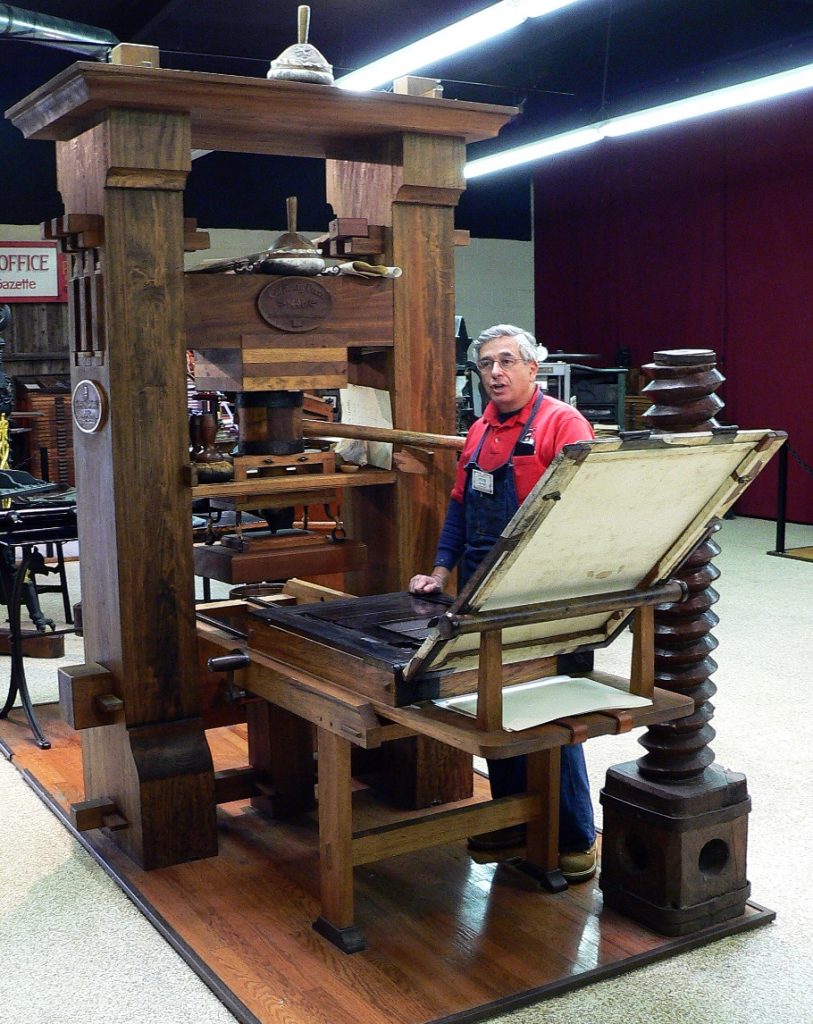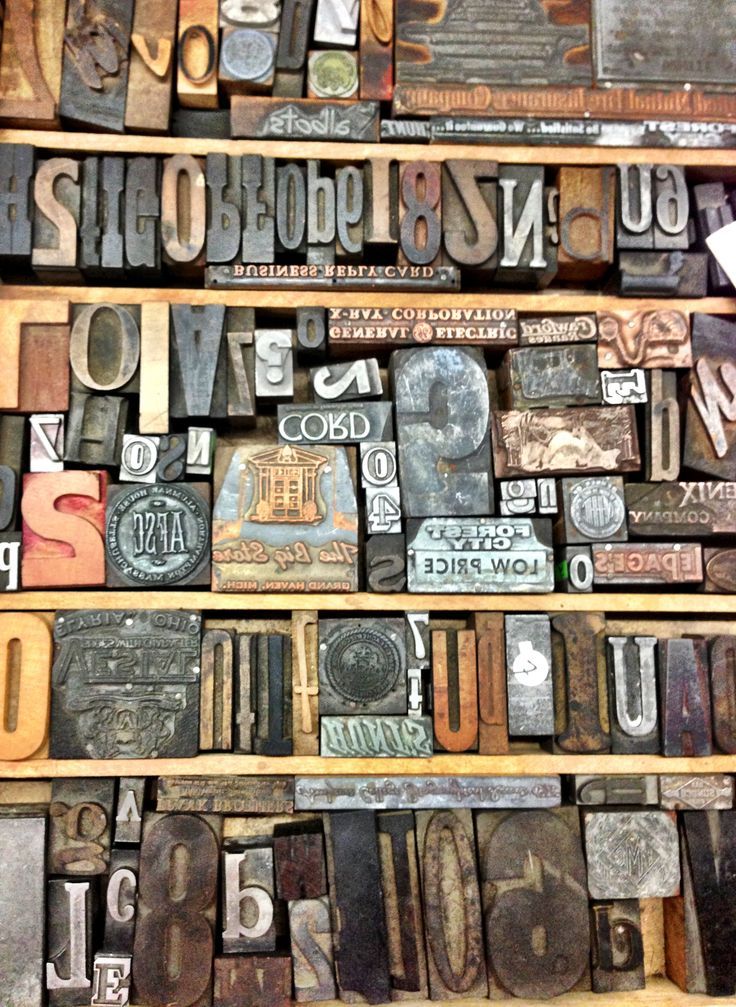In the fast-paced, digital world of the 21st century, the art of letterpress printing stands as a testament to a time when craftsmanship, patience, and artistry were the cornerstones of printing. Rooted in the historical annals of ancient China and catapulted into prominence by Johannes Gutenberg’s ingenious invention, letterpress printing has not merely survived the test of time; it has evolved, adapted, and experienced a renaissance, captivating the hearts of artisans, collectors, and enthusiasts worldwide. In this extensive exploration, we will embark on a journey through the intricate origins, delve deep into the nuanced letterpress process, explore its impact on various industries, discuss its contemporary revival, and ponder its future in the ever-changing landscape of technology and art.
I. Origins and Evolution: From Woodblocks to Movable Type

The story of letterpress printing begins in ancient China, where woodblock printing was the norm. However, it was Gutenberg’s groundbreaking invention in the 15th century that transformed the world of printing. Movable metal type, a revolutionary concept, allowed for the mass production of books, fundamentally altering the dissemination of knowledge and culture. This evolution paved the way for a vibrant printing industry, giving rise to master craftsmen, skilled compositors, and visionary printers who honed the art of letterpress over centuries.
II. The Letterpress Process Unveiled: A Symphony of Techniques
A. Typesetting: The Art of Precision
Typesetting, the heart of letterpress printing, is a meticulous art that demands patience, precision, and a keen eye for detail. Skilled artisans carefully arrange individual metal or wooden letters and characters in a composing stick, ensuring the accurate formation of words and sentences. The arrangement is not just a mechanical process; it is an artistic endeavor where the compositor plays the role of a sculptor, shaping language and meaning letter by letter.
B. Printing: Where Ink Meets Paper
Once the type is painstakingly set, the printer meticulously applies ink to the typeform. The inked type is then pressed onto paper, creating a tactile impression that is the hallmark of letterpress. The choice of paper, ink viscosity, and printing pressure are not arbitrary; they are deliberate choices made by the printer, each decision contributing to the final aesthetic of the printed piece.
C. The Human Touch: A Dance of Craftsmanship
Unlike modern digital printing, letterpress involves a deeply personal touch. Printers must constantly monitor the ink consistency, adjust the pressure, and maintain the integrity of the type. This intimate involvement of the human hand imparts a soul to each print, making it a testament to the printer’s skill and dedication. Every print becomes a unique creation, bearing the subtle imperfections that reveal its handmade nature.
III. The Impact of Letterpress: Shaping Culture and Commerce
A. Cultural Influence: From Books to Broadsides
In its heyday, letterpress printing played a pivotal role in shaping cultures and societies. It brought literature, philosophy, and art to the masses, enabling the rapid dissemination of ideas. Beyond books, letterpress was instrumental in creating visually captivating broadsides, posters, and newspapers, becoming an essential tool for political movements, advertisements, and public announcements. The tangible quality of letterpress made these printed materials not just informative but also artifacts of historical significance.
B. Commercial Applications: Invitations, Packaging, and Beyond
In the realm of commerce, letterpress printing found a niche in crafting elegant invitations, business cards, and packaging materials. Its ability to create a lasting impression, both visually and tactilely, made it the preferred choice for high-end branding and exclusive events. Even in the digital age, where virtual invitations dominate, the allure of a letterpress invitation remains unparalleled, signifying sophistication and class.
IV. The Resurgence of Letterpress: A Renaissance in the Digital Era
After facing a decline with the advent of offset printing and digital technologies, letterpress printing has experienced a remarkable resurgence in recent decades. Artists, designers, and artisans have rekindled their love affair with this vintage craft, recognizing its unique ability to convey a sense of heritage and authenticity. This revival is not merely a return to tradition; it is a celebration of the tangible, the tactile, and the timeless.
A. Artistic Renaissance: Exploring Creative Boundaries
Contemporary artists have embraced letterpress as a medium for artistic expression, pushing the boundaries of traditional techniques. Experimental letterpress art incorporates elements of collage, mixed media, and even digital technology, resulting in visually stunning and conceptually rich pieces. Letterpress workshops and art studios have become hubs of creativity, where artists explore the synergy between age-old craftsmanship and modern artistic sensibilities.
B. Craftsmanship in the Digital Age: Bridging Tradition and Technology
Ironically, the digital age has become an ally in the resurgence of letterpress printing. Computer-aided design and photopolymer plates have streamlined the pre-press process, making it easier for designers to translate their digital creations into letterpress prints. Online platforms have facilitated global collaborations, enabling artists and printers from different corners of the world to exchange ideas, techniques, and inspiration. Social media has provided a stage for showcasing letterpress creations, fostering a vibrant online community passionate about this craft.
V. Preserving the Craft: Education, Preservation, and Legacy
As the custodians of this ancient art form grow older, there is a pressing need to pass on their knowledge to the next generation. Workshops, apprenticeships, and educational programs have emerged as vital initiatives to preserve the craft of letterpress printing. Universities and institutions with printing programs are ensuring that letterpress remains an integral part of the curriculum, allowing young printers to learn the techniques from seasoned experts.
A. Preservation Efforts: Museums, Archives, and Restoration
The importance of preserving vintage letterpress equipment cannot be overstated. Museums dedicated to printing history and letterpress equipment have become invaluable repositories of knowledge. Preservationists and restoration experts work tirelessly to salvage antique presses and type, ensuring that these relics of the past continue to function. Archival efforts document the evolution of letterpress, preserving not just the physical artifacts but also the stories of the printers who shaped the craft.
B. Legacy and Continuity: Passing the Torch
In the hands of passionate educators and mentors, the legacy of letterpress printing continues to thrive. Through mentorship programs and collaborative initiatives, experienced printers pass on their skills, techniques, and wisdom to the next generation. The continuity of this tradition relies on the willingness of seasoned craftsmen to share their expertise and the enthusiasm of young printers to embrace the challenges and rewards of letterpress.
VI. The Future of Letterpress: Innovation and Preservation

As we gaze into the future, the trajectory of letterpress printing appears to be a harmonious balance between innovation and preservation. While digital technologies continue to influence the craft, there is a resolute commitment to preserving the authenticity and tactile quality that define letterpress. Hybrid techniques, combining letterpress with other forms of printing or artistic expression, are becoming increasingly prevalent, opening new avenues for creative exploration.
A. Hybrid Approaches: Integrating Letterpress with Modern Techniques
The marriage of letterpress with digital printing, laser cutting, and other modern technologies has resulted in innovative and visually striking outcomes. Artists and designers are experimenting with hybrid approaches, seamlessly blending the tactile allure of
letterpress with the precision of digital techniques. This convergence of old and new not only expands the creative possibilities but also introduces letterpress to audiences unfamiliar with its traditional roots.
B. Environmental Considerations: Sustainable Practices
In an era acutely aware of environmental concerns, the letterpress community has embraced sustainable practices. The use of eco-friendly, soy-based inks and the choice of recycled or tree-free papers reflect a conscientious approach to the craft. Printers are exploring ways to minimize waste, recycle materials, and reduce their ecological footprint, ensuring that letterpress remains an environmentally responsible choice for both artists and clients.
The Enduring Legacy of Letterpress Printing
In the intricate dance of metal type and ink, in the symphony of impressions on paper, letterpress printing transcends its utilitarian purpose and becomes a celebration of human creativity. It embodies the spirit of innovation that led Gutenberg to revolutionize printing, the artistry of craftsmen who meticulously set each type, and the timeless appeal of tangible, tactile beauty.
The resurgence of letterpress in the digital age is not merely a nostalgic embrace of the past; it is a testament to the enduring allure of a craft that bridges generations and technologies. Letterpress printing is not just a technique; it is a philosophy—a philosophy that values the deliberate, the meticulous, and the tangible. In an age inundated with ephemeral digital experiences, letterpress offers something tangible, something real.
As we move forward, the craft of letterpress printing stands at the crossroads of tradition and innovation, heritage and experimentation. It reminds us that amid the whirlwind of technological advancements, there is profound value in honoring our past, preserving our cultural heritage, and cherishing the art forms that encapsulate the human spirit.
In the hands of passionate artisans and the curious minds of future printers, letterpress printing will continue to evolve, adapt, and captivate. Its legacy will not fade; instead, it will flourish, embracing the future while staying rooted in its rich history. The allure of letterpress printing will endure, inspiring generations to come, reminding them that the magic of ink on paper is not just a product of technology but a manifestation of artistry, dedication, and the enduring craft of letterpress printing.
